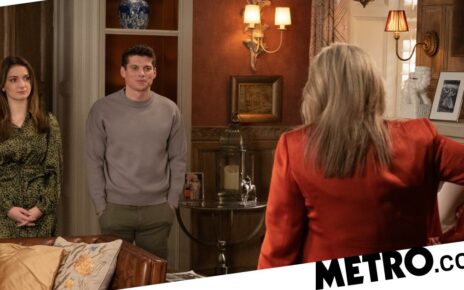When writer-director Todd Field first asked editor Monika Willi to collaborate on “TÁR,” the plan was to edit in Vienna, where Willi lives. “We both have young children at home and made the decision that only one of us should suffer,” Field told IndieWire. By the time production wrapped in December 2021, however, Austria was locked down due to a COVID surge, and London — the next choice for Field and Willi’s home base — followed in January. This led to a decision that would fundamentally alter Field and Willi’s circumstances in a way that ultimately gave them greater focus and discipline than they could ever have had editing in more conventional surroundings.
“We made the decision that we would go somewhere very remote,” Field said, “so we ended up about 45 minutes outside of Edinburgh, Scotland, in a 15th-century former nunnery.” Away from their families and limited in their contact with the outside world, Field and Willi developed a strict routine in which they would have their morning coffee, go for separate walks or runs, and then edit side by side, seven days a week. “There was nothing to do other than walk the hedgerows and edit. We didn’t have a car, and our food was delivered by the supermarket. It was a very hermetic process.”
Read More: Why ‘TÁR’ Looks Different from Every Other Movie of 2022
Unsurprisingly, the isolation helped Willi zero in on addressing the difficulties of sustaining the rhythms and structure of Field’s unconventional script. “The biggest challenge was the overall musicality, to bring the different tempos of the characters into one new composition,” Willi told IndieWire. “To have one big piece made of a lot of smaller pieces and see that it never lost its tension.” The long hours and seclusion meant Willi and Field could fine-tune the movie as meticulously as they wanted without compromise. “The biggest pleasure of working this way with Todd was being able to be so precise, not getting loose, and working as long as it took to achieve what he wanted. He was always trying to make it perfect.”
“TÁR”
©Focus Features/Courtesy Everett Collection
Early in the process, Willi realized that she would need to think carefully about sound to find the appropriate shape for the images. “The pace of the film is really driven by its musicality, and that’s defined by the sound,” she said. Given how highly attuned Lydia TÁR is to the sounds around her, Willi and Field couldn’t wait for the mix to lay in what they needed. “It was clear that all the important sounds had to already be there while we were cutting the picture,” Willi said. To that end, Willi and Field spent much of their time at the nunnery recording sounds with a boom mike attached to a Zoom recorder that they traded back and forth with sound designer Stephen Griffiths.
“Unless it was windy off the North Sea or the birds were particularly active, we ended up [recording] a lot of Foley up there,” Field said, noting that working on his own Foley is a practice that began back in film school. “John Roesch, who is one of the great Foley artists of all time, worked on my thesis film. He said, ‘I’ll help you out, but you need to learn how to do this.’ So he would bring me into the Foley pits; he would make me shoot sound. There was such an incredible satisfaction in having an attachment to every sound that’s in your film. And I never really wanted to give that up. So there was a lot of intent behind every single sound in the film. There’s no room tone. We’re not pushing air through speakers or anything.”
Read More: Cate Blanchett Was Todd Field’s Only Choice for ‘TÁR’
While the rigor that Field and Willi’s monastic situation yielded unquestionably provided an engagement with the material that would not have been achievable otherwise, it also meant they had only each other to rely on for feedback. Yet even this proved an advantage, as they were forced to probe their reactions to each new cut. “Every morning, we’d have coffee and say, ‘Let’s go through the work,’” Field said. “We’d run the film down, and at the end of it, we would say, ‘How did you feel about her today?’ Those answers would change a lot, and then we’d say, ‘OK, why?’ At a certain point you say, ‘OK, I’m feeling differently today. Not because we’ve changed the cut. I’m feeling differently today because I had a bad night, or I’m feeling differently today because it’s raining outside and I was thinking of going for a run.”
Ultimately Field felt that this sort of inquiry was fruitful for a movie in which the audience is supposed to form their own opinions and judgments about Lydia Tár, and in which there’s a delicate balance in terms of figuring out how far ahead of the audience the movie should get. “If you put it in architectural terms, it’s about keeping the building from leaning one way or the other, trying to find the balance — are we pointing too much? It was about trying to figure out why you were engaging with a film in a different manner as opposed to it being an editorial thing, just to be certain that there were access points for everyone. So anyone could bring anything they wanted to complete the film for themselves.”
Source: Read Full Article



